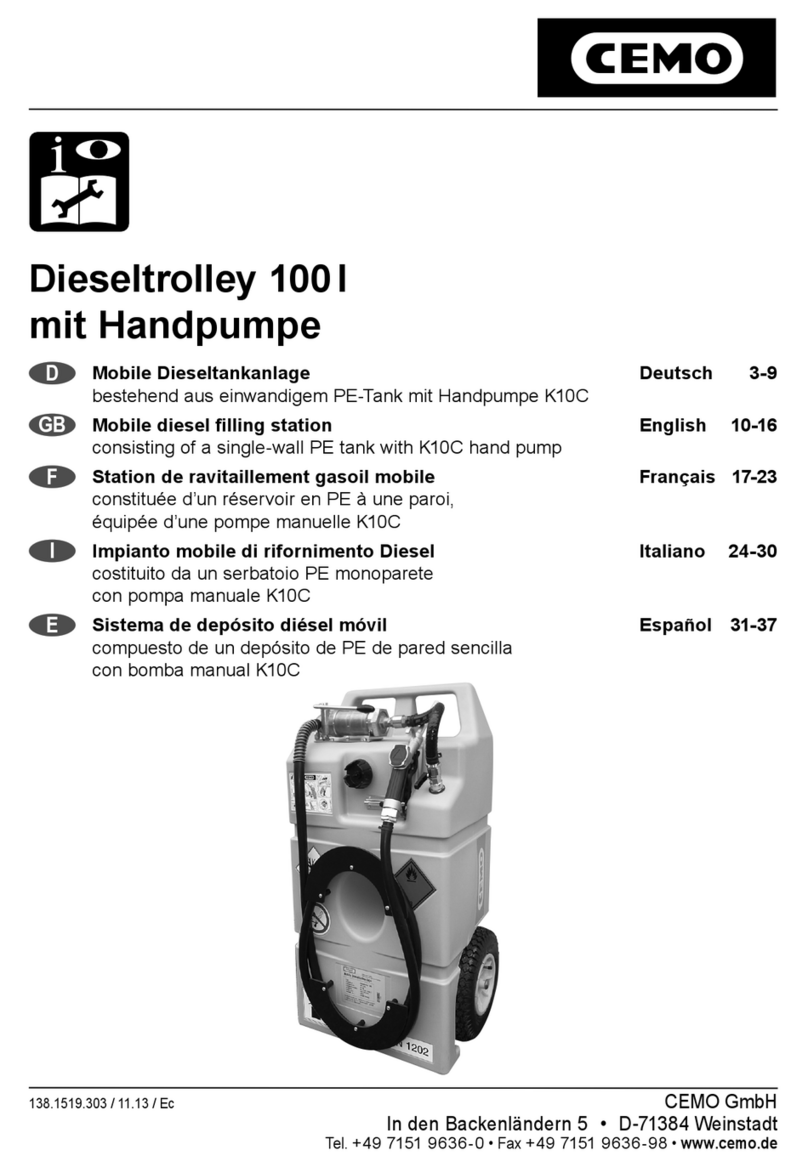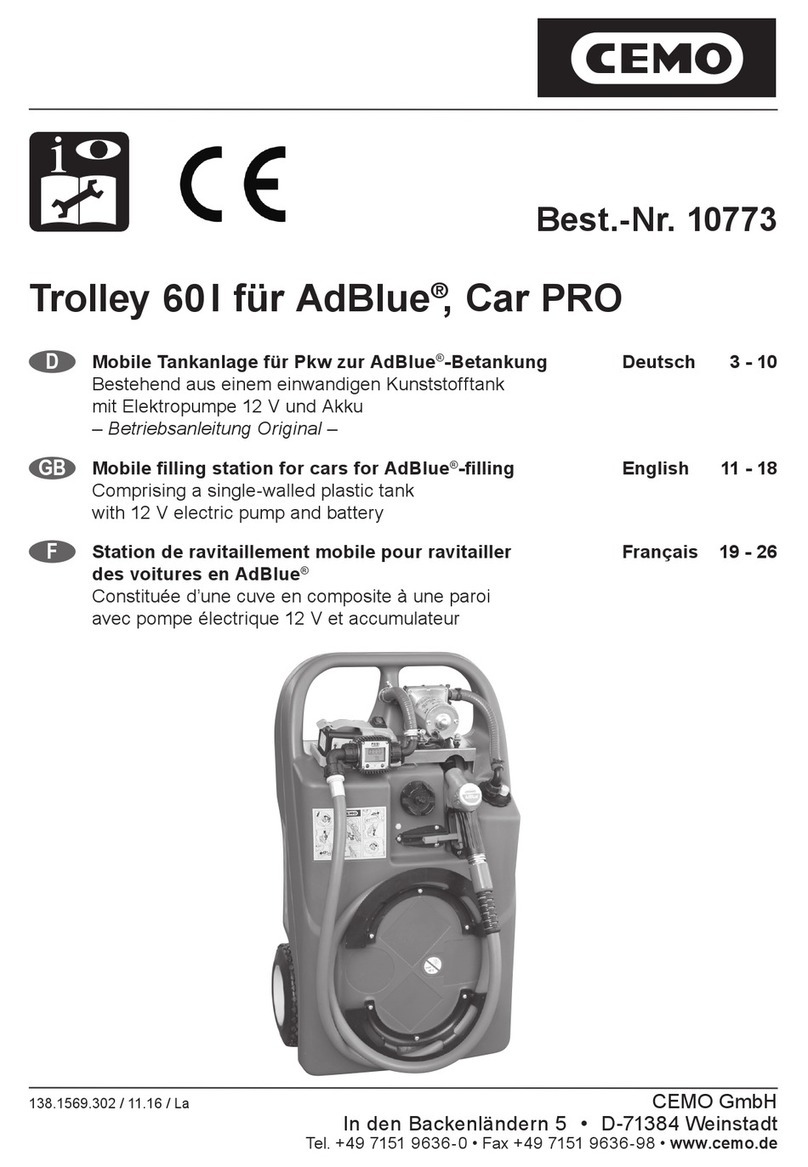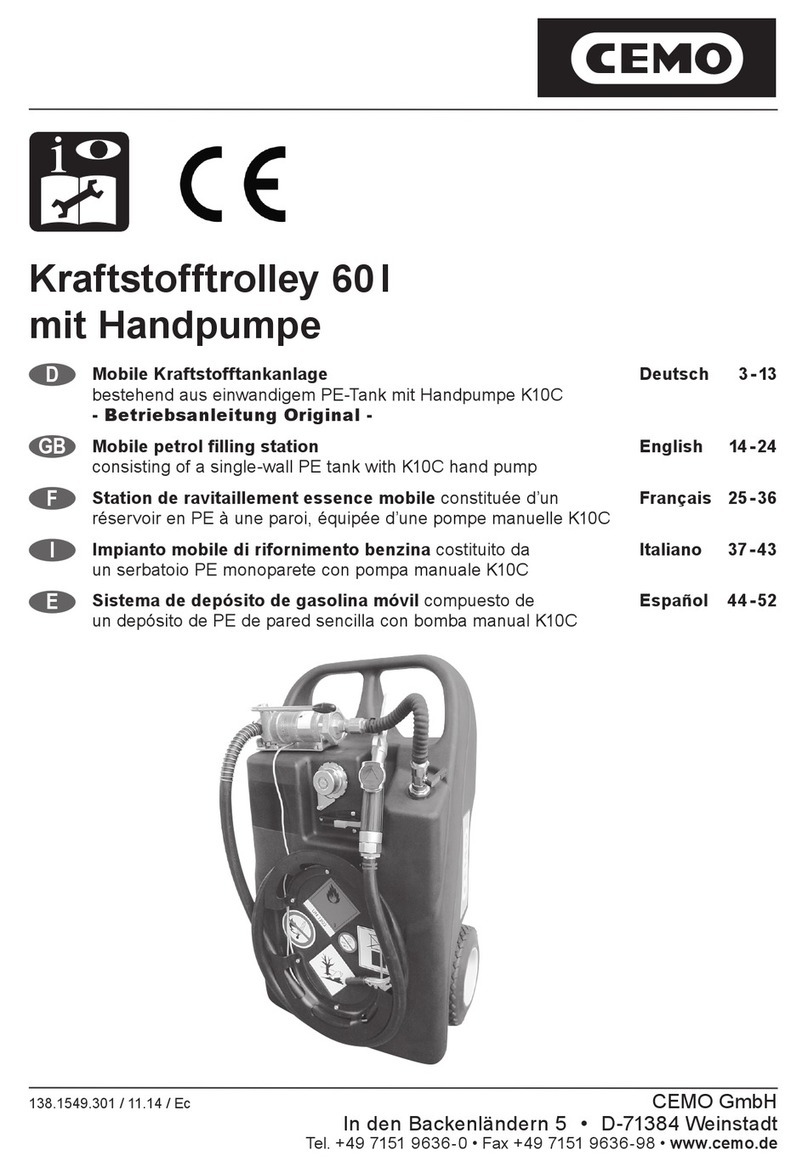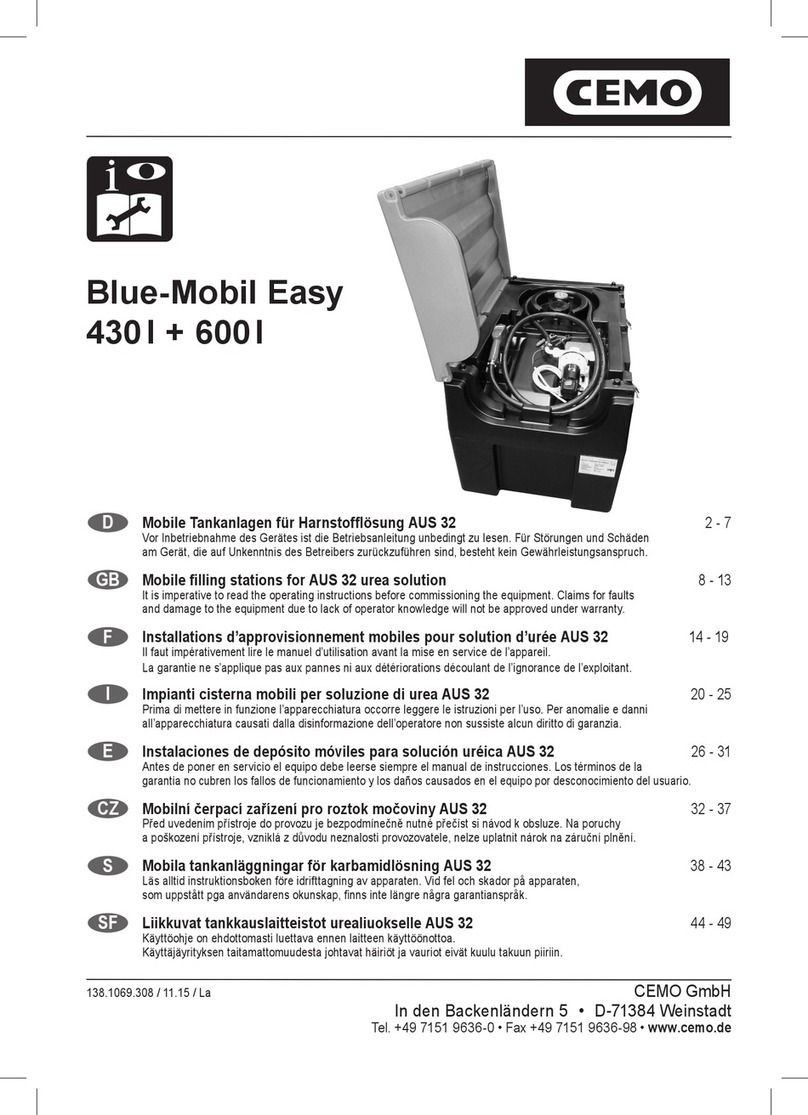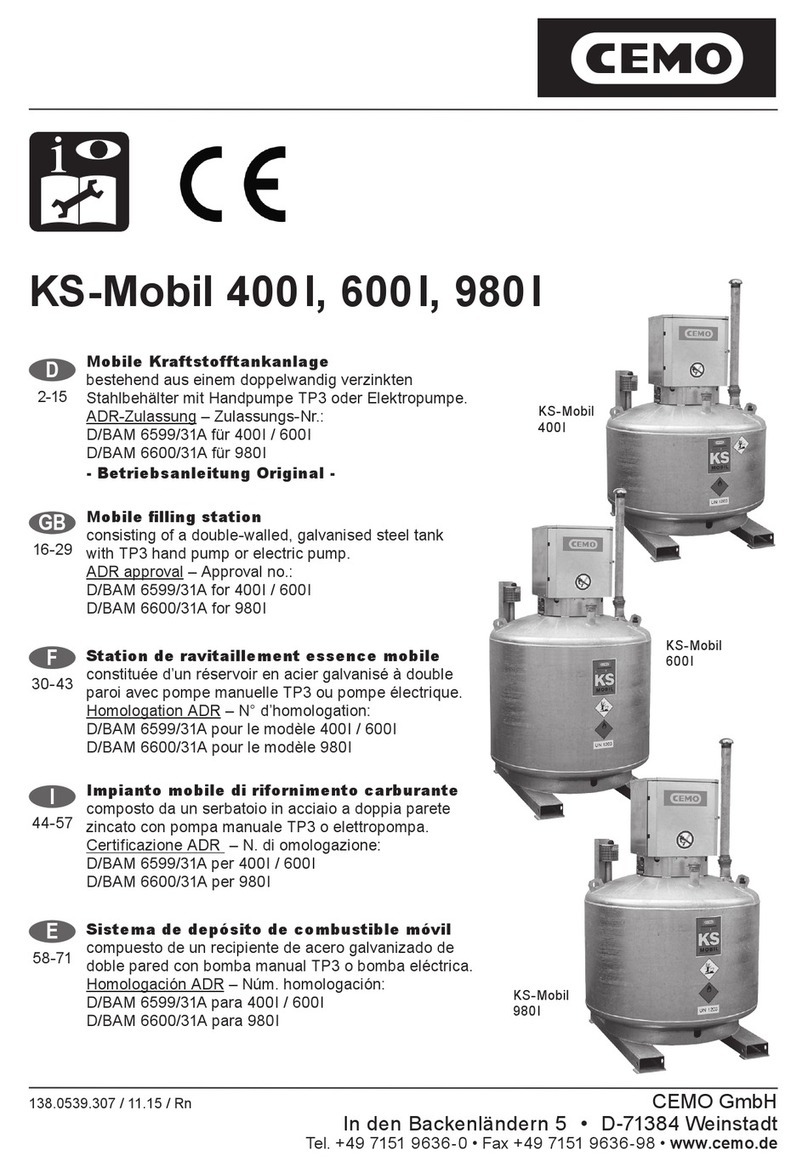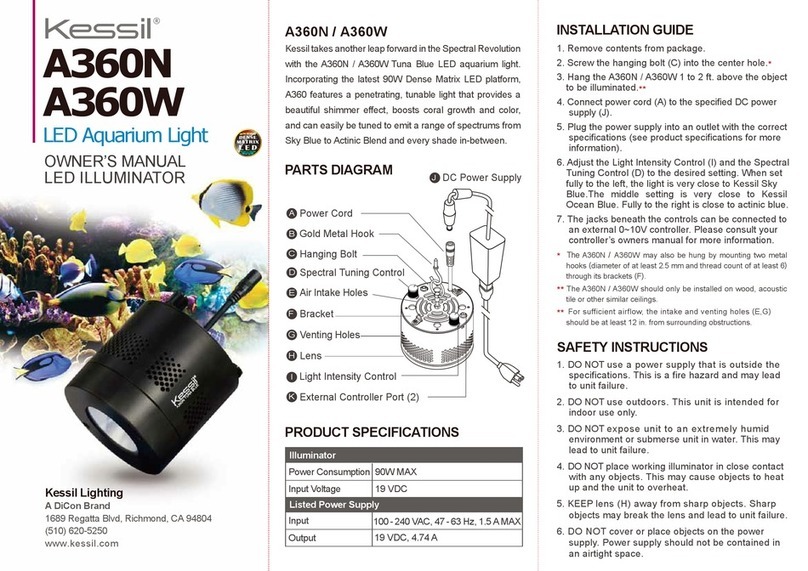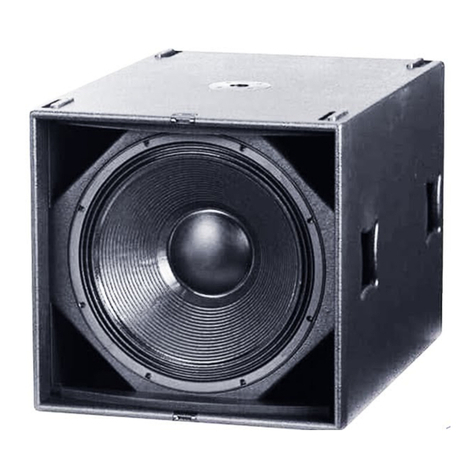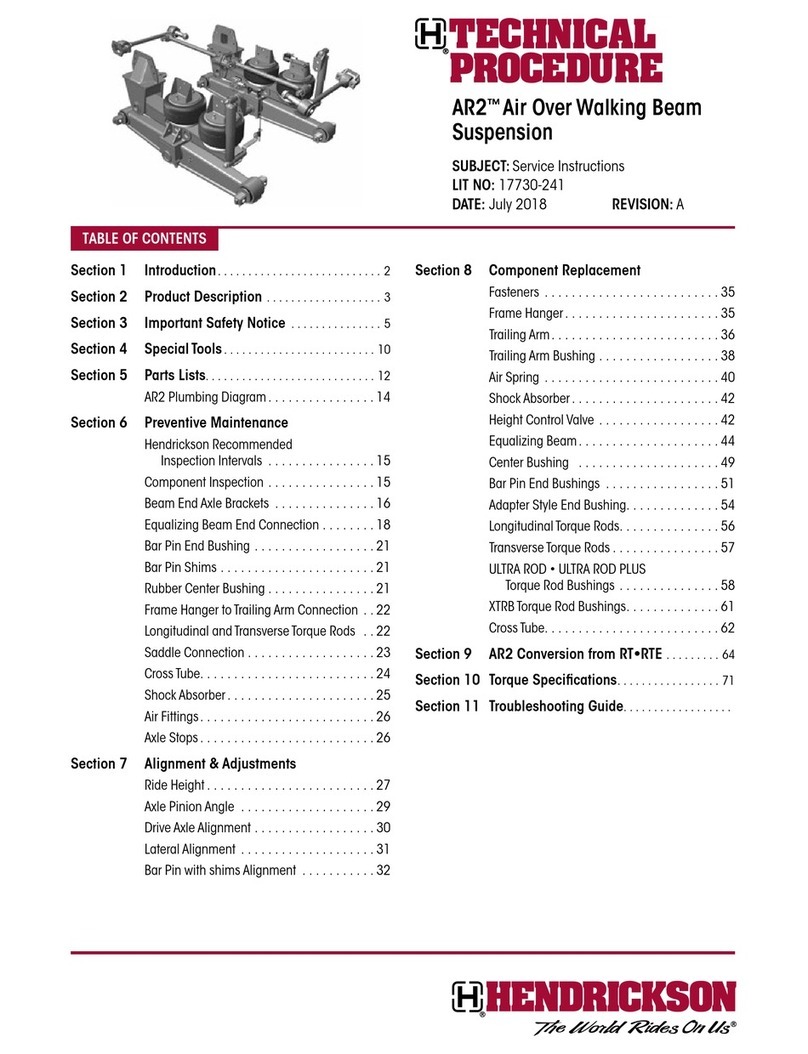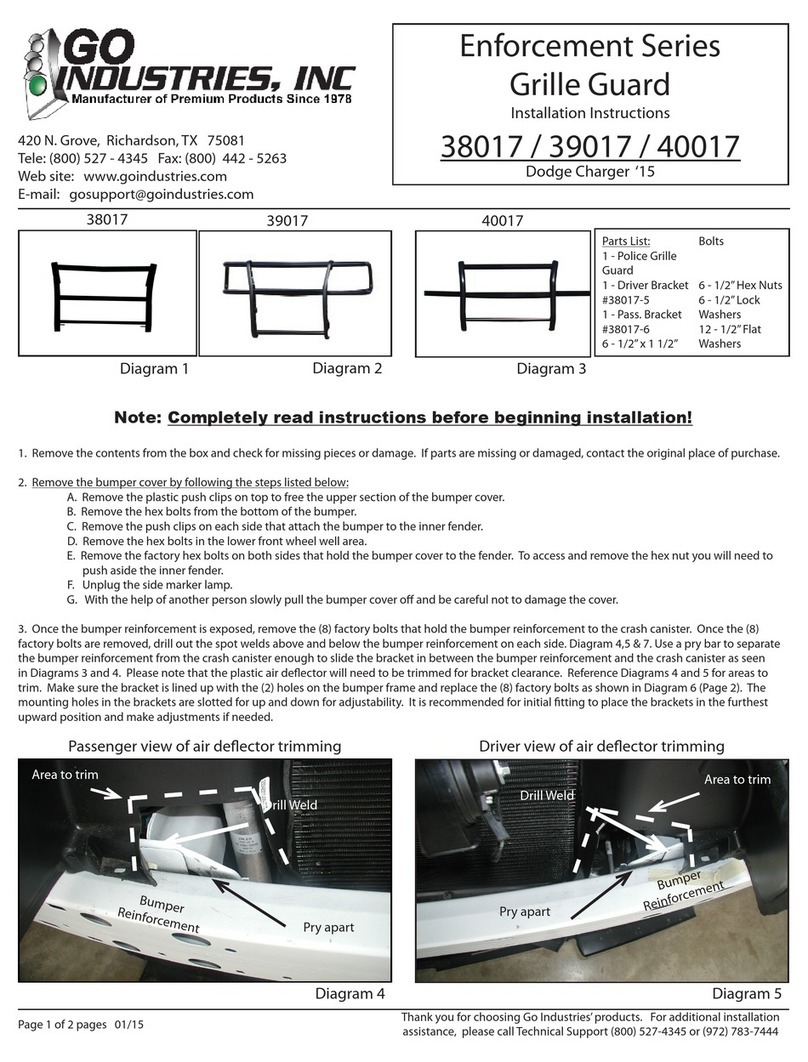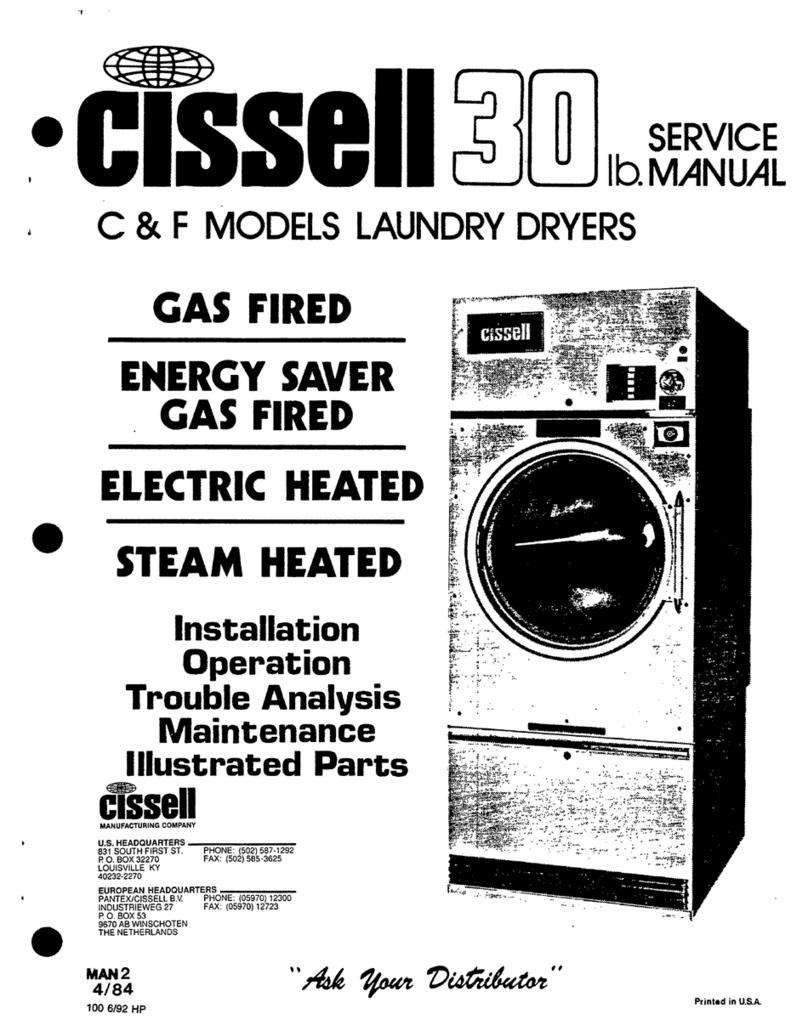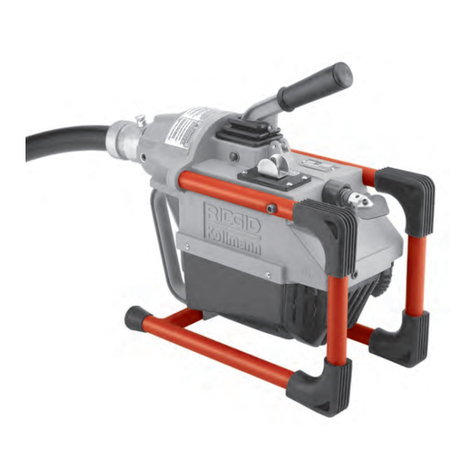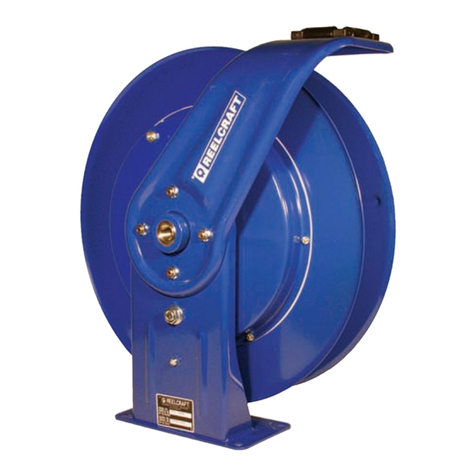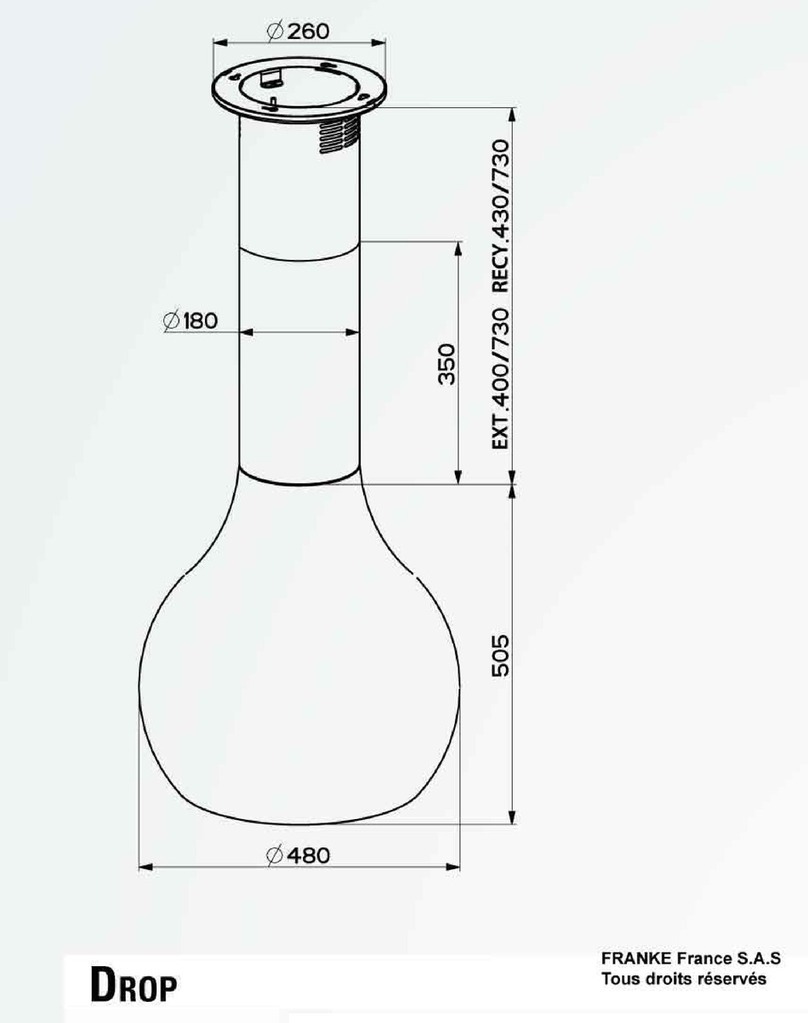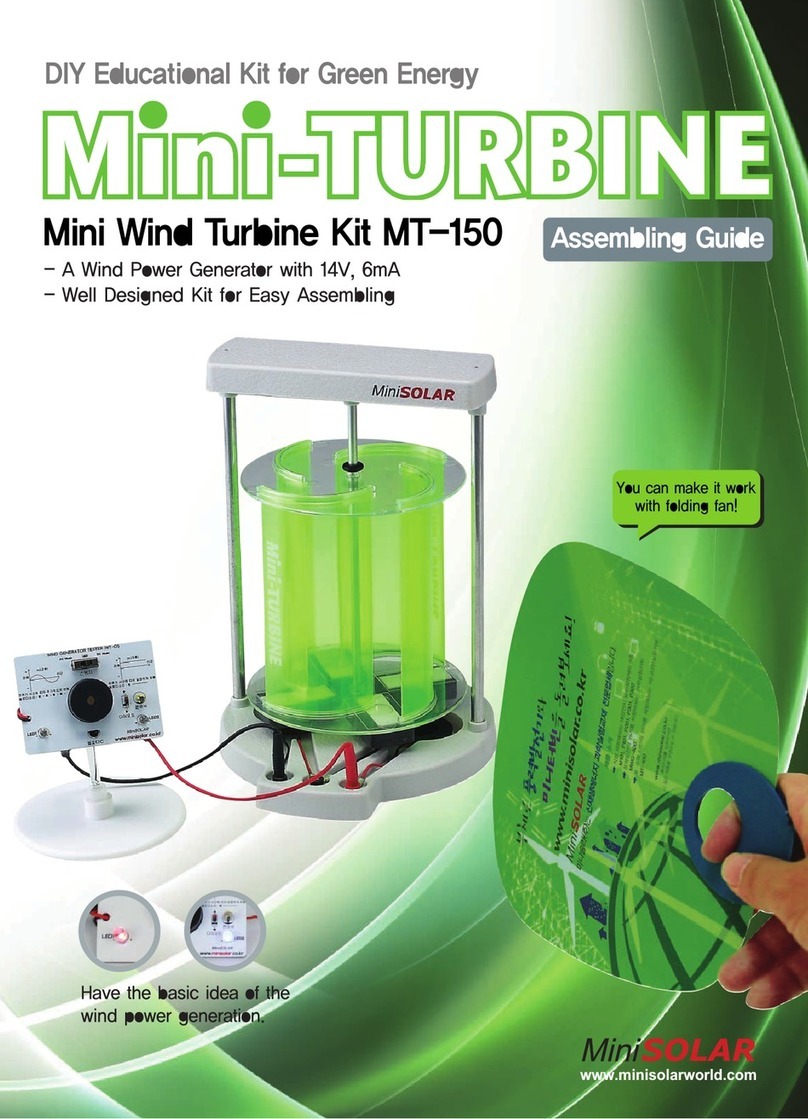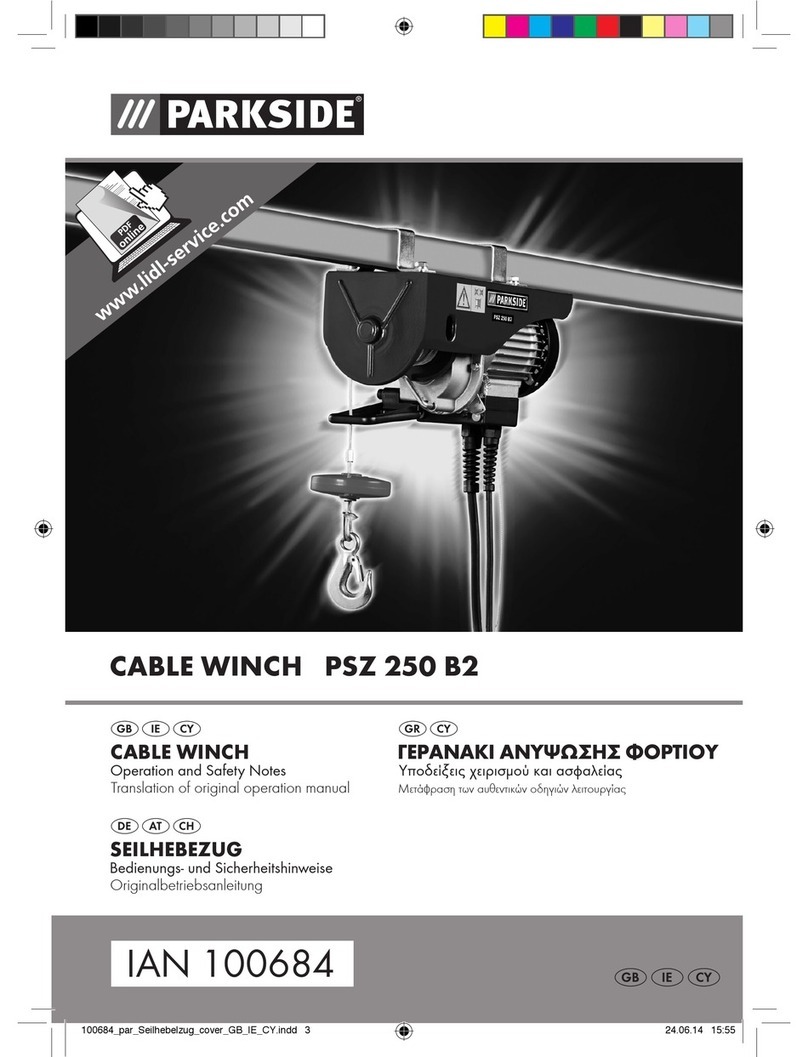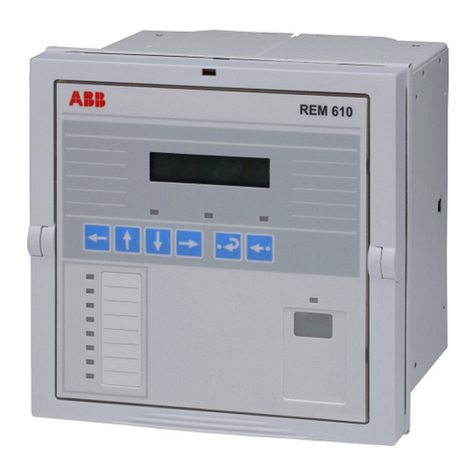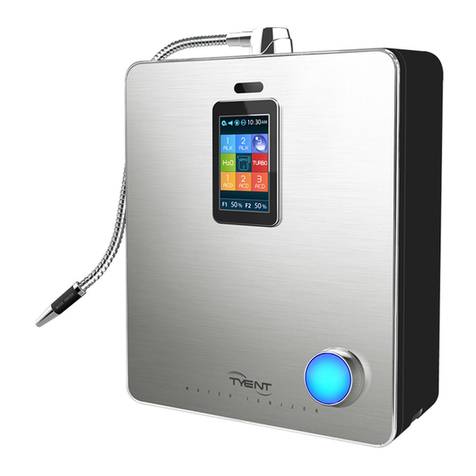
D
4
1.1.2 Originalteile verwenden
Verwenden Sie bitte nur Originalteile des
Her stellers oder von ihm empfohlene Teile.
Beachten Sie auch alle Sicherheits- und
Anwendungs hinweise, die diesen Teilen
beigegeben sind.
Dies betrifft
• Ersatz- und Verschleißteile,
• Zubehörteile.
1.1.3 Bedienung der Tankanlage
Um Gefahren durch falsche Bedienung zu ver-
meiden, darf die Tankanlage nur von Personen
bedient werden, die
• die Betriebsanleitung gelesen haben,
• ihre Fähigkeiten zum Bedienen nachgewiesen
haben,
• mit der Benutzung beauftragt sind.
i Wichtig!
Die Betriebsanleitung muss für jeden
Benutzer gut zugänglich sein.
1.1.4 Warnhinweise an der Tankanlage
Die Warnschilder an der Anlage müssen stets
angebracht und lesbar sein.
Vom Hersteller angebrachte Schilder:
Verbot von Feuer und offenem
Licht und Rauchen
Anbringung:
an Tank-Vorderseite
1.2 Bestimmungsgemäße Verwendung
Diese mobile Dieseltankstelle ist zulässig
gemäß ADR 1.1.3.1 a) (Privatgebrauch, max. 60 l
Inhalt) und 1.1.3.1 c) (Handwerkerregelung).
Der Sammel-, Transport- und Entnahmebehälter
ist auch zum Aufstellen im Freien geeignet
(Umgebungsbedingungen Kapitel 2.1 beach-
ten!).
Eine bestimmungsgemäße Verwendung betrifft
z. B. (vorzugsweise) folgende Flüssigkeiten:
- Dieselkraftstoff/Heizöl
- Biodiesel
1.2.1 Dieseltrolley nach ADR 1.1.3.1 c)
Gemäß ADR 1.1.3.1 c) (in Deutschland sog.
„Handwerkerregelung“) dürfen auch mit
Behältern ohne ADR-Zulassung Gefahr gut-
transporte durchgeführt werden.
Für Behälter nach ADR 1.1.3.1 c) gilt:
• Transport nur für direkten Verbrauch mit
Eigenbetankung (d. h., Anfahren nur einer
Betankungsstelle und Durchführung der
Betankung nicht durch Dritte),
• keine Bezettelung (Aufkleber) erforderlich,
• keine Ausrüstungspflicht mit Feuerlöschgerät,
• kein Begleitpapier erforderlich,
• zulässiger Behälterinhalt: max. 450 l, es gilt
ebenfalls die sog. „1000-Punkte-Regel“
• keine Wiederholungsprüfung erforderlich,
• keine Lebensdauerbeschränkung.
1.2.2 Zusammenfassung
Eine andere Verwendung ist nicht bestimmungs-
gemäß!
Aus Sicherheitsgründen ist es auch nicht
gestattet, Umbauten an der Tankanlage vorzu-
nehmen (außer dem Anbau von Zubehör, das
speziell durch den Hersteller bereitgestellt wird).
Zur bestimmungsgemäßen Verwendung gehört
auch das Beachten aller Hinweise in dieser
Betriebsanleitung,
1.3 Sachwidrige Verwendung
i Wichtig!
Eine sachwidrige Verwendung ist dem-
zufolge auch das Nichtbeachten der
Hinweise dieser Betriebsanleitung.
D e s w e i t e r e n :
• Nichtbeachtung der Regelungen der ADR,
einschließlich 1.1.3.1 c), und jeweils gültiger
nationaler Bestimmungen
• Lagerung und Transport von anderen als den
unter bestimmungsgemäßer Verwendung
genannten Flüssigkeiten, z. B.: Bioethanol,
Chemikalien, Öle (Schmier-, Hydraulik-,
Pflanzenöl)
